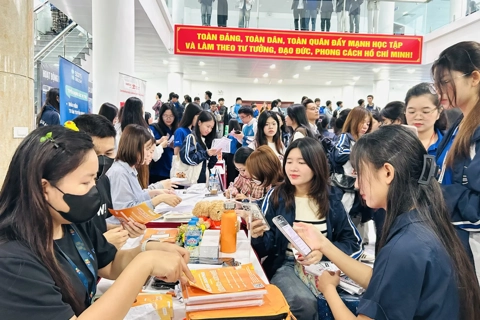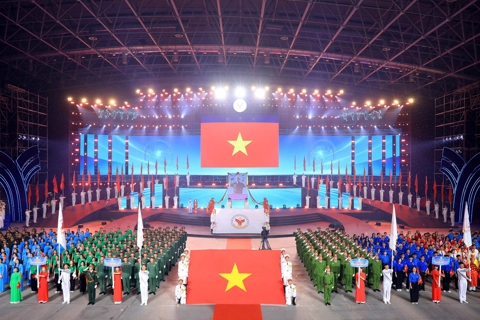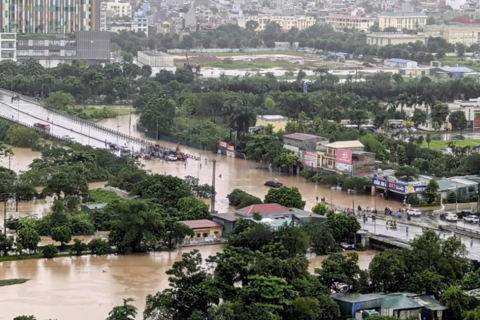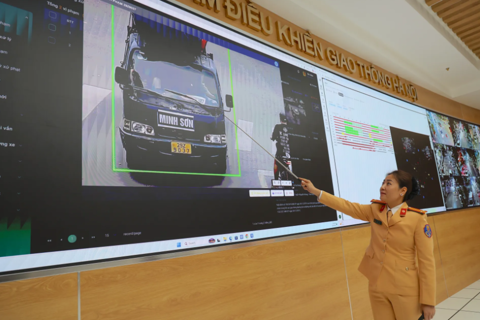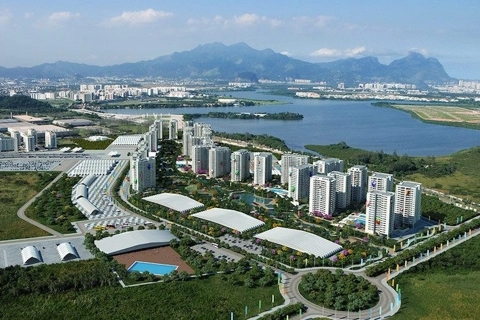Hanoi seeks UNESCO’s support in preserving Thang Long Imperial Citadel
Reconstructing the Imperial Axis and restoring Kinh Thien Palace, where traditional rituals can be held and national history and unity revived, is a matter of national importance.
THE HANOI TIMES — Hanoi hopes that UNESCO will continue to support the city in the reconstruction of Kinh Thien Palace and other relics within the Thang Long Imperial Citadel, as part of the joint effort to preserve and promote world heritage in the capital and across Vietnam.
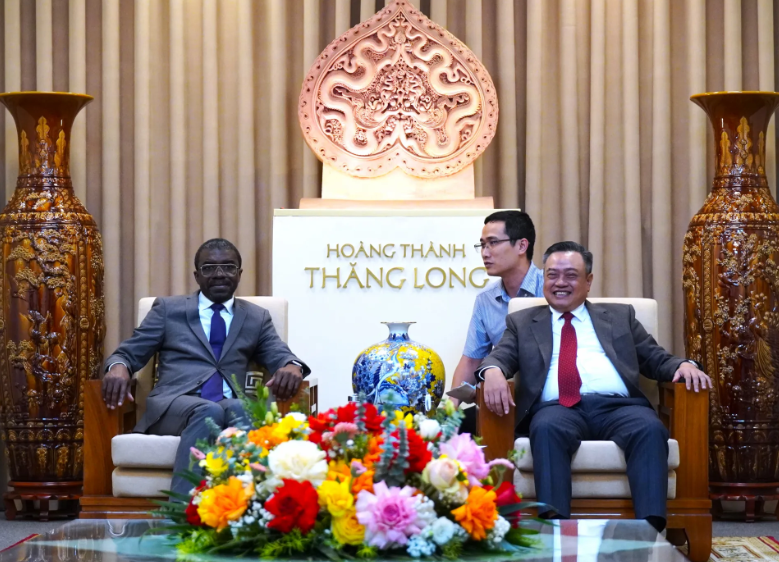
Chairman of the Hanoi People’s Committee Tran Sy Thanh and Director of the UNESCO World Heritage Center Lazare Eloundou Assomo. Photos: Viet Anh/The Hanoi Times
“This is also the earnest and meaningful aspiration of the people of Hanoi and of Vietnam as a whole,” Chairman of the Hanoi People’s Committee Tran Sy Thanh shared the view during a meeting with Director of the UNESCO World Heritage Center Lazare Eloundou Assomo today [May 20].
At the meeting, Thanh expressed his gratitude to the director and UNESCO's technical agencies for their continued support and dedication to the preservation and promotion of heritage in Vietnam in general, and in Hanoi in particular.
He expressed his hope that UNESCO, the World Heritage Centre, and especially Lazare Eloundou Assomo, would continue to accompany, guide, and support Hanoi in the reconstruction of Kinh Thien Palace and the monuments within the Thang Long Imperial Citadel.
“This effort is part of a broader initiative to preserve and promote world heritage in Hanoi and across Vietnam,” Thanh said.
At the same time, the Mayor requested UNESCO’s continued support and guidance so that the dossier on the restoration of Kinh Thien Palace and its central space within the Thang Long Imperial Citadel can be reviewed and approved by UNESCO as soon as possible.
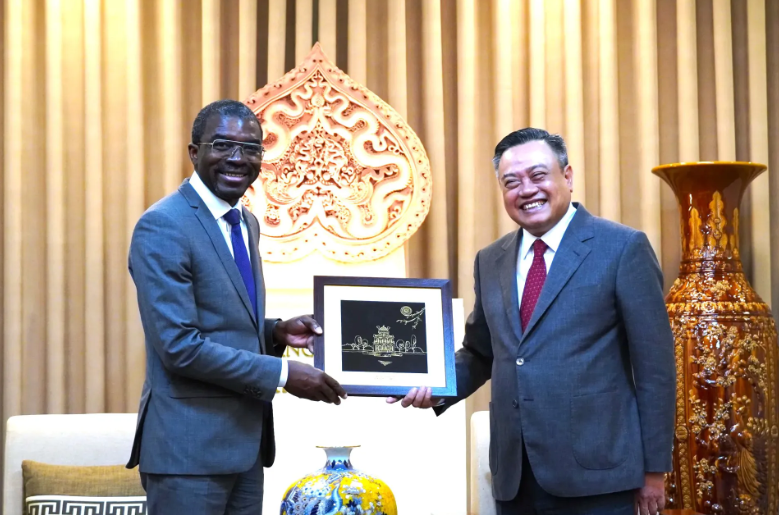
Chairman of Hanoi People's Commitee presents a souvenir to the Director of the UNESCO World Heritage Center Lazare Eloundou Assomo.
Thanh stressed that reconstructing the ancient Imperial Axis and restoring Kinh Thien Palace, where the people of Vietnam can conduct traditional rituals, revive national history, and awaken the spiritual power and unity of the nation in a new era, is a matter of national importance.
Regarding the Co Loa relic site, the Chairman noted that Hanoi is currently preparing the nomination dossier to submit to the UNESCO World Heritage Centre. He called on Assomo to offer attention and support in facilitating the necessary procedures.
In response, Assomo expressed his appreciation and support for the aspirations of Hanoi’s leadership. He affirmed that UNESCO will work closely with and support Hanoi by providing the necessary technical guidance in the preservation and promotion of world heritage sites.
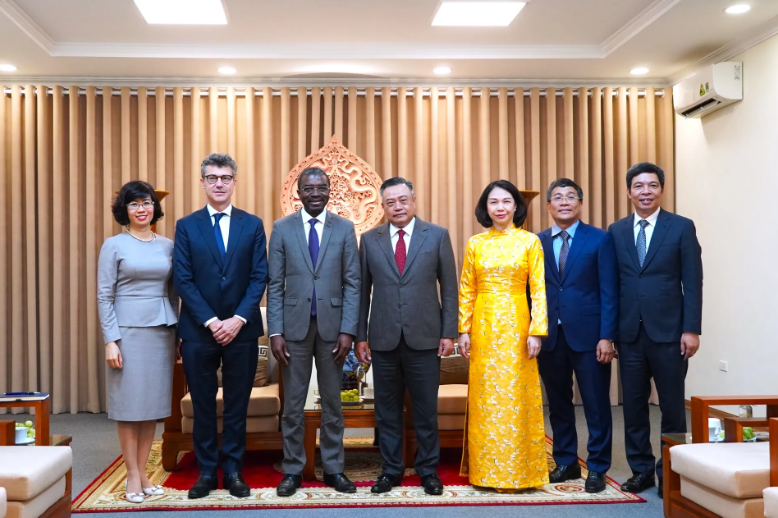
Delegates at the meeting.
He highly valued Hanoi's strong commitment to the restoration and conservation of the Thang Long Imperial Citadel, emphasizing that the site is not only of great significance to the capital and the Vietnamese people but also to humanity as a whole.
Assomo also expressed UNESCO’s willingness to support Vietnam and Hanoi in conserving the Co Loa relic site. He recommended that the city develop a comprehensive management plan for the site with input from relevant stakeholders and that it assess the pressures from tourism to formulate appropriate conservation strategies.
He thanked the Hanoi authorities for their continued support of UNESCO agencies. On this occasion, Assomo invited the chairman to visit the UNESCO World Heritage Centre headquarters in Paris. Thanh expressed his appreciation and said he would arrange a visit at an appropriate time.




